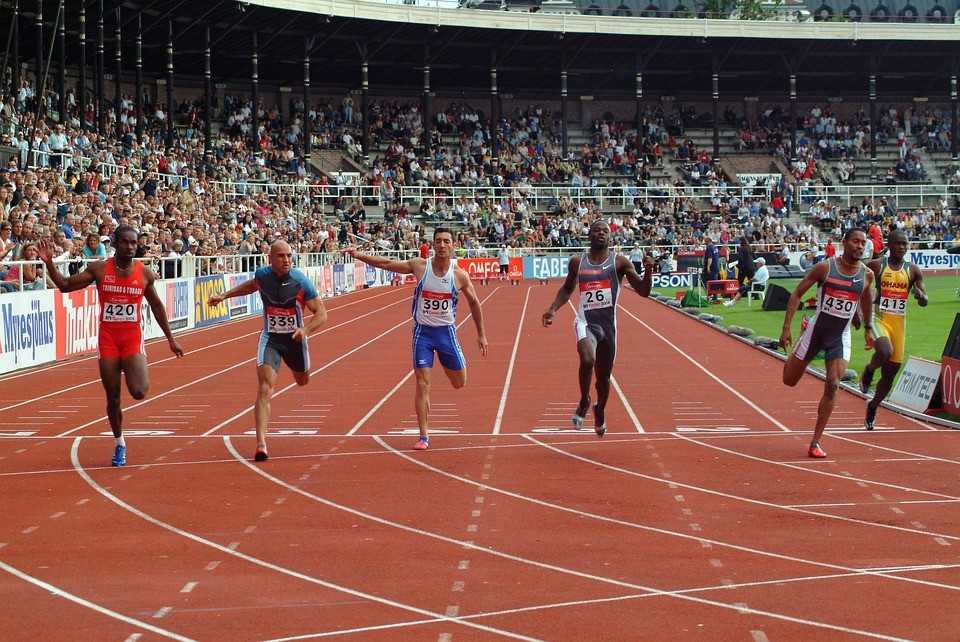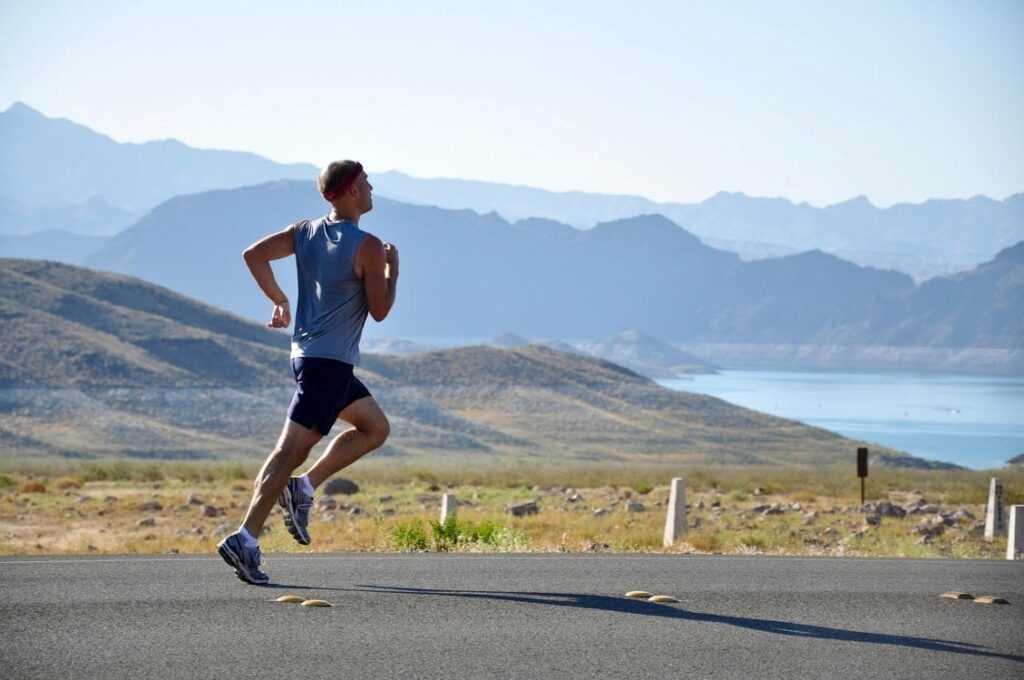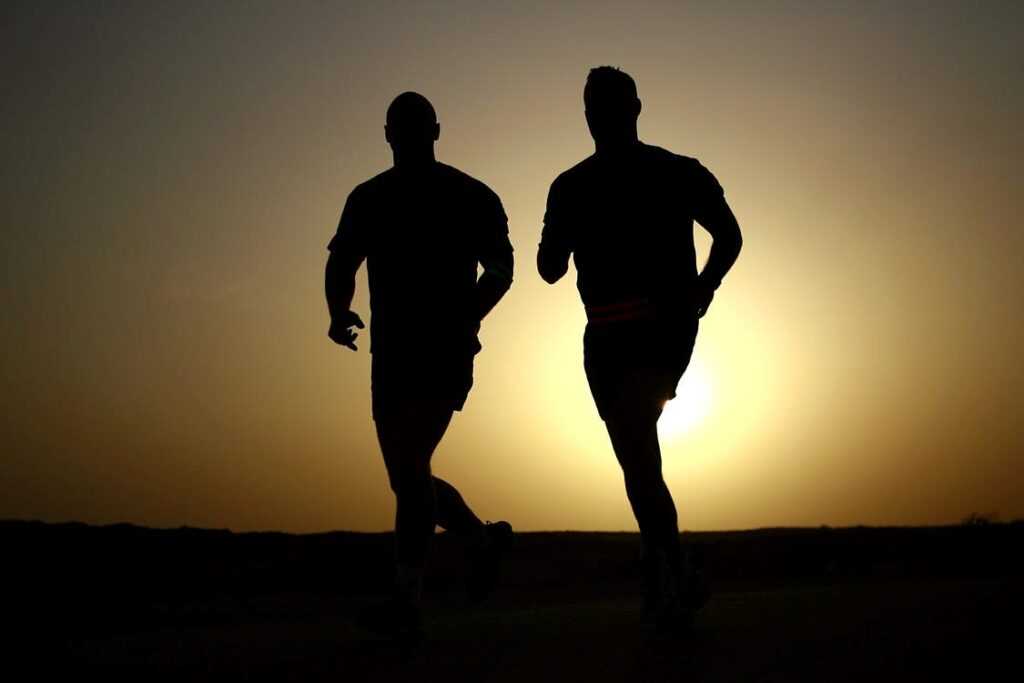A common strategy recommended for fat burning is ‘fasted cardio’, or to do cardio first thing in the morning, on an empty stomach. This is said to enhance fat burn, more than doing cardiovascular training after eating something, specially carbs. In fact, this strategy is being followed quite blindly in the modern gyms, by various physique & fitness athletes, bodybuilders and other gym freaks.

This strategy was said to have been first recommended by Bill Phillips, a fitness entrepreneur and an author. He is said to have consulted a lot of sportsmen and celebrities like Sylvester Stallone & Demi Moore. The strategy for fasted cardio was promoted by Bill in his book ‘Body for Life’, first published in 1999, which went on to become one of the highest selling fitness books of all time.
In the book, Phillips claimed that performing 20 minutes of high-intensity aerobic exercise after an overnight fast has a greater effect on fat loss than an hour of cardio performed following consumption of a meal. The reason he gave behind this theory of his was that, when the body’s glycogen levels are low, during a fasted state, the body starts using stored body fat as a fuel, instead of carbohydrates. Now this sounds quite convincing, but the studies don’t support this theory.
Fasted exercise (commonly referred to as ‘training low’), is training with reduced energy availability (typically achieved through carbohydrate restriction), usually at a low to moderate intensity. The classic and most popular way to train fasted is to exercise in the morning before breakfast (after an ‘overnight fast’; app. 8-12 hours of no food or fluid [except water]).
However, there are other ways in which fasted exercise can be executed:
- Training twice a day: This involves performing two workouts per day. The first is performed having consumed some carbohydrate. This is then followed by low or preferably no carbohydrate intake before the second workout.
- Long training without carbohydrate intake: Workouts of >90 minutes in duration are performed without any carbohydrate intake during exercise. This is due to the fact that after 90 minutes of exercise, carbohydrate (glycogen) stores in the body become mostly depleted, increasing the reliance of fat as an energy source.
- Sleep low: This method involves training to deplete carbohydrate stores before sleep and purposely restricting carbohydrate intake until after the next workout on the following morning.
One of the primary researches done to bust this myth was by Brad Schoenfeld, who in his study, said that, it is short-sighted to look solely at how much fat is burned during an exercise session. The human body is very dynamic and continually adjusts its use of fat for fuel. What fuel source the body will use is governed by a host of factors (i.e., hormonal secretions, enzyme activity, transcription factors, etc.), and these factors can change by the moment. Thus, fat burning must be considered over the course of days—not on an hour-to-hour basis—to get a meaningful perspective on its impact on body composition. As a general rule, if you burn more carbohydrate during a workout, you inevitably burn more fat in the post-exercise period and vice versa.

For any workout, our body primarily uses two fuel sources, i.e. fat and carbohydrates. What fuel source the body uses, depends on the intensity of the workout. At low intensities the body uses fat as the primary source of fuel. Carbohydrates, on the other hand, are a faster source of energy. Our body uses carbohydrates to fuel intense, quick and explosive movements.
Acc. to a study, “Carbohydrates and fats are oxidized simultaneously, but their relative contribution depends on a variety of factors. In healthy subjects, substrate utilization during rest is highly dependent on carbohydrate availability. During exercise, changes in substrate utilization are highly influenced by exercise duration and intensity. The longer the time spent exercising, the higher the contribution of fat as an energy substrate. With increasing intensity, the contribution of carbohydrates to energy expenditure increases and the contribution of fatty acids to energy expenditure decreases. Substrate utilization under the same exercise intensity is affected by the exercise mode.”
A 1993 study, showed that peak fat oxidation occurs at 65% VO2 max. A 2002 study, discovered that maximum fat oxidation occurred within a range of 55 to 72% V02max. The research also showed that fat oxidation falls off quickly beyond intensities equivalent to 75% VO2max or greater, & contribution of fat oxidation to energy expenditure became negligible above 86 to 92% VO2max.
So the ‘Fat Burning Zone’ occurs often between 50-70% of an individual’s maximum heart rate, which is equivalent to moderate physical intensity exercise.
However, the fact cannot be denied that there is exclusive fat burn at a particular intensity during workout but what one needs to understand is that the percentage of fat burn is very small.
What matter is the total energy expenditure rather than just the amount of fat burn. Since working at higher intensities, i.e. close to your lactate threshold burns more total calories. In fact, the calorie burn during the workout is not even considered important, what matters is the amount of calories a person burns 24-48hrs or more post-workout or something we have understood as EPOC. After a high intensity exercise the body’s metabolism remain elevated converting stored calories primarily from free fatty acids to energy to return the body to homeostasis.
Acc. to coach Brad Schoenfeld, “there is an associated increase in the secretion of both growth hormone and noradrenaline—hormones that are integrally involved in the fat burning process—resulting in an increased utilization of fat of fuel. EPOC is intensity dependent—the harder you train, the more calories you expend following training. That’s why you need to push yourself as hard as you can during your high-intensity intervals, going as close to all-out as possible.”
For e.g. if you do a leisure walk for 45 min, and burn 200 calories, out of which 150 are from fat. On the other hand, you perform a session of high intensity sprints or a weight training session, burning over 600 calories, of which just 250 are from fat, and rest from carbs.
Now people think that during high intensity workout the primary source of energy is carbs and that is why fat burn is less. But, have you ever seen a fat sprinter?
Sprinters, bodybuilders etc. primarily train anaerobically using carbs during the workout. Yet, they are leaner and more muscular as compared to their long distance counterparts who train more aerobically. What one needs to understand is that fat burning and weight loss is more about total calorie burn than only fat burn during workout. in simple words, most people working out on a cardio machine in the gym focussing on the fat burning zone are simply wasting time doing less efficient exercise.

A 1999 study, evaluated the effect of carbohydrate ingestion during exercise on the lipolytic rate, and fat oxidation. Six moderately trained men cycled for 2h on four separate occasions. During two trials, they were fed a high-glycaemic carbohydrate meal during exercise at 30 min (0.8g/kg), 60 min (0.4g/kg), and 90 min (0.4g/kg); once during low-intensity exercise [25% peak oxygen consumption (VO2 peak)] and once during moderate-intensity exercise (68% VO2 peak). During two additional trials, the subjects remained fasted (12-14h) throughout exercise at each intensity.
Results in the low-intensity trials showed that although lipolysis was suppressed by 22% in the fed state compared with the fasted state, fat oxidation remained similar between groups until 80–90 min of cycling. Only after this point was a greater fat oxidation rate observed in fasted subjects. Conversely, during moderate-intensity cycling, fat oxidation was not different between trials at any time.
These findings indicated that despite a suppression of lipolysis after carbohydrate ingestion during exercise, the lipolytic rate remained in excess and thus did not limit fat oxidation.
A 2000 study, investigated the effect of carbohydrate ingestion before and during exercise and metabolism and performance in seven trained men, who cycled for 120 min at app. 63% of peak power output. Trials were conducted on 4 separate occasions, with subjects given (a) a placebo before and during training, (b) a placebo 30 minutes before training and then a carbohydrate beverage every 15 minutes throughout exercise, (c) a carbohydrate beverage 30 minutes before training and then a placebo during exercise, or (d) a carbohydrate beverage both before and every 15 minutes during exercise.
Similar to previous studies, results showed no evidence of impaired fat oxidation associated with consumption of carbohydrate either before or during exercise.
Now, with the above two studies, what is clearly evident is that during moderate-to-high intensity cardiovascular exercise in a fasted state, more fat is surely broken down, as compared to exercise in a fed state. But the body doesn’t use that much amount of fat for fuel. So the free fatty acids in the blood, which are not used for energy, goes back to storage.
A 1999 study, compared the 2hr excess post-exercise oxygen consumption (EPOC after four-exercise bouts of varying intensity and duration, with and without glucose in milk ingestion. The four experimental exercise conditions were low intensity, long duration with Glucose in milk, low intensity, long duration without Glucose in milk, high intensity, short duration with Glucose in milk, and high intensity, short duration without Glucose in milk.
Results showed that ingestion of the glucose in milk beverage resulted in a significantly greater excess post-exercise oxygen consumption compared with exercise performed in a fasted state in both high- and low-intensity bouts.

In a 1989 study, thermogenic effects of pre- and postprandial exercise was examined in seven lean active females. Energy expenditure was measured for four separate treatments: Exercise Only (25 min treadmill run at 60% VO2 max), Meal Only (910 kcal mixed meal), Exercise-Meal and Meal-Exercise.
The thermogenic response to the Exercise-Meal treatment was similar to the Meal Only treatment. However, the Meal-Exercise treatment resulted in a greater energy expenditure than the Meal Only and Exercise-Meal treatments. The Exercise Only treatment showed the lowest thermogenic response.
The data suggested that exercise following a meal would be more beneficial than exercise before a meal in increasing and maintaining an elevated energy expenditure.
Now this means that, exercising after a meal actually has a higher thermogenic effect, which means greater calorie and fat burn.
A 1980 study, assessed six subjects (27-30yr) who cycled for 1 h at 61% VO2max after carbohydrate loading, and after carbohydrate depletion. The nitrogen losses were more than doubled when training while glycogen depleted compared with glycogen loaded. This resulted in a protein loss estimated at 10.4% of the total caloric cost of exercise after 1 hour of cycling at 61% VO2 max. This would suggest that performing cardiovascular exercise while fasting might not be advisable for those seeking to maximize muscle mass.
In a 2014 study, researchers investigated the changes in fat mass and fat-free mass following four weeks of fasted versus fed aerobic exercise in young women adhering to a hypocaloric diet. Twenty healthy young female volunteers were randomly assigned to 1 of 2 experimental groups: a fasted training (FASTED) group that performed exercise after an overnight fast or a post-prandial training (FED) group that consumed a meal prior to exercise.
Training consisted of 1 hour of steady-state aerobic exercise performed 3 days per week. Subjects were provided with customized dietary plans designed to induce a caloric deficit. A meal replacement shake was provided either immediately prior to exercise for the FED group or immediately following exercise for the FASTED group.
Both groups showed a significant loss of weight and fat mass from baseline, but no significant between-group differences were noted in any outcome measure. These findings indicate that body composition changes associated with aerobic exercise in conjunction with a hypocaloric diet are similar regardless whether or not an individual is fasted prior to training.
A 2008 study, investigated the effect of an endurance training program (6wk, 3 day/wk, 1–2h, 75% of VO2) in moderately active males. They trained in the fasted or carbohydrate fed state while receiving a standardized diet [65 percent of total energy intake from carbohydrates, 20% fat, 15% protein].
The researchers found that, short term training elicits similar adaptations in peak VO2 whether carried out in the fasted or carbohydrate-fed state. Although there was a decrease in exercise-induced glycogen breakdown and an increase in proteins involved in fat handling after fasting training, fat oxidation during exercise with carbohydrate intake was not changed.

In a 2017 systematic review study, researchers examined the effect of overnight-fasted versus fed exercise on weight loss and body composition. The findings did not support the use of fasted exercise for weight loss and positive changes in body composition. Furthermore, performing exercise in a fasted state did not influence weight loss or changes in lean and fat mass.
These findings support the notion that weight loss and fat loss from exercise is more likely to be enhanced through creating a meaningful caloric deficit over a period of time, rather than exercising in fasted or fed states.
A 2013 study, investigated the effects of low-volume high-intensity interval training (HIT) performed in the fasted (FAST) versus fed (FED) state on body composition, muscle oxidative capacity, and glycaemic control in 16 overweight/obese women, for a period of 6 weeks Short-term low-volume HIT is a time-efficient strategy to improve body composition and muscle oxidative capacity in overweight/obese women, but the study found no significant difference between FAST and FED for any measured variable.
A 2011 study, verified the differences in fat metabolism during training in fasting or feeding conditions. They compared the effect on oxygen consumption (VO2) in 8 healthy young men who performed the same moderate-intensity training session (36 min of cardiovascular training on treadmill at 65% maximum heart rate) in the morning in 2 tests in random sequence: FST test (fasting condition) without any food intake or FED test (feeding condition) after breakfast.
The authors concluded that when moderate endurance exercise is done to lose body fat, fasting before exercise does not enhance lipid utilization; rather, physical activity after a light meal is advisable.
A 2016 meta-analysis, verified the effect of aerobic exercise performed in the fasted v. fed states on fat and carbohydrate metabolism in adults. The study suggests that aerobic exercise at low-to-moderate intensity, performed in the fasted state, induces an increase in fat oxidation, when compared with exercise performed following consumption of a carbohydrate containing meal.
However, the researchers also said that, “the findings should not be extrapolated as long-term effects, especially with the aim of reducing body fat, as there is insufficient evidence of effectiveness and safety.”
A 2018 study, determined the effects of fasting vs. pre-exercise feeding on continuous aerobic and anaerobic or intermittent exercise performance, and post-exercise metabolic adaptations. The review’s findings indicated that fasted vsfed exercise conditions differentially affect performance and post-exercise metabolism. Pre-exercise feeding enhances performance during prolonged (>60 minutes) aerobic exercise, whereas performance did not differ during shorter duration aerobic exercise between fasted and fed conditions.

A 2018 study in the journal Plos One, observed whether performing a low intensity endurance exercise following an overnight fasted (FAST) or fed (FED) condition promotes different cardiorespiratory, enzymatic and hormonal responses. Nine male physical subjects, randomly performed two sessions of 45 minutes’ low intensity exercise interspersed by seven days, differentiated only in whether they were provided with a standardized meal or not.
The researchers concluded that in terms of fat oxidation, performing a low intensity aerobic exercise in a fasting [FAST] condition does not seem to offer an advantage, as compared with performing the same exercise under a feeding [FED] condition. Moreover, based on Cortisol levels, if a primary goal is to burn fat while, simultaneously, maintaining muscle mass, performing a low intensity aerobic exercise under a fasting condition might not be the best choice.
So, there is actually no direct benefit of doing cardiovascular exercises on an empty stomach. Firstly, with an empty stomach you cannot maintain a moderate or a higher intensity in a workout. Also, the overall calorie burn and fat burn is higher during HIIT, than low intensity steady state cardio. On top of that, fasted cardio is detrimental for someone looking for muscle strength and hypertrophy.
Now, there are certain studies which shows fasted cardio to be better, but none have been done for performance. These have been generally short terms studies performed on medical subjects.
For e.g. a 2010 study, investigated whether exercise training in the fasted state is more potent than exercise in the fed state to rescue whole-body glucose tolerance and insulin sensitivity during a period of hyper-caloric fat-rich diet. Healthy male volunteers received a hyper-caloric fat-rich (50% of kcal) diet for 6 weeks. Some of the subjects performed endurance exercise training (4 days per week) in the fasted state, whilst the others ingested carbohydrates before and during the training sessions.
The researchers concluded that, that early morning exercise in the fasted state is more potent than an identical amount of exercise in the fed state to improve whole-body glucose tolerance, as well as to induce beneficial adaptations in muscle cells that eventually may contribute to improved peripheral insulin sensitivity. One important point to note in this study was that as compared to fasted state, the athletes were given a very high fat diet, which is not the case for performance.
In a 2020 study, researchers examined the existing literature on the effect of fasted versus fed cardio on improving body composition for physique athletes. Here is what the study concluded:
“Based on the current available evidence, the following practical applications may be advisable for physique competitors and coaches:
- Physique athletes may use fasted, fed, or protein-enhanced cardio as their primary aerobic exercise mode to increase their caloric expenditure, increase their overall deficit, and improve their body composition.
- Protein-enhanced cardio may minimize losses of fat-free mass by providing an anticatabolic stimulus. Furthermore, protein-enhanced cardio may increase post-exercise energy expenditure and improve post-exercise fat oxidation as opposed to fed or fasted cardio.
- Fasted exercise can be performed at various intensities. However, it is not suggested to perform fasted exercise for more than 60 minutes due to potential losses of fat-free mass from lack of carbohydrates with pro- longed activity. Furthermore, because high-intensity exercise relies primarily on carbohydrates as a source of ATP production, lower- intensity exercise may be more favourable for caloric expenditure so as to prevent the breakdown of proteins to make glucose through gluconeogenesis.
- Because improving aerobic performance is not a primary goal for physique athletes, the cardio intensity and modality used should ideally improve recovery from resistance training, minimize systemic fatigue accumulation, and maximize adherence. Thus, it is important that physique athletes perform cardio at an appropriate frequency, intensity, duration, and mode (i.e., cycling, stairmaster, walking, etc.) that best complements the rest of their training demands & lifestyle preferences.”



